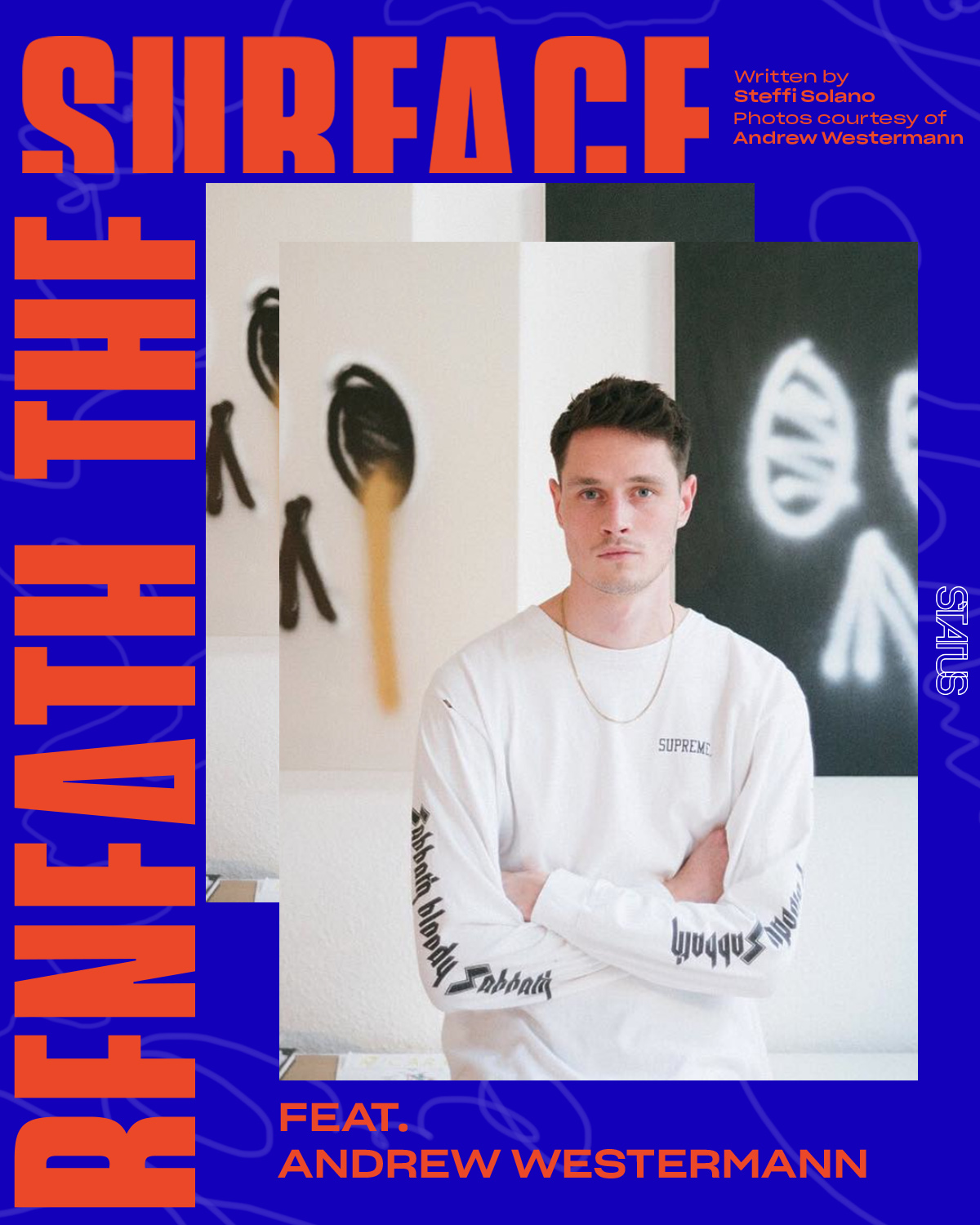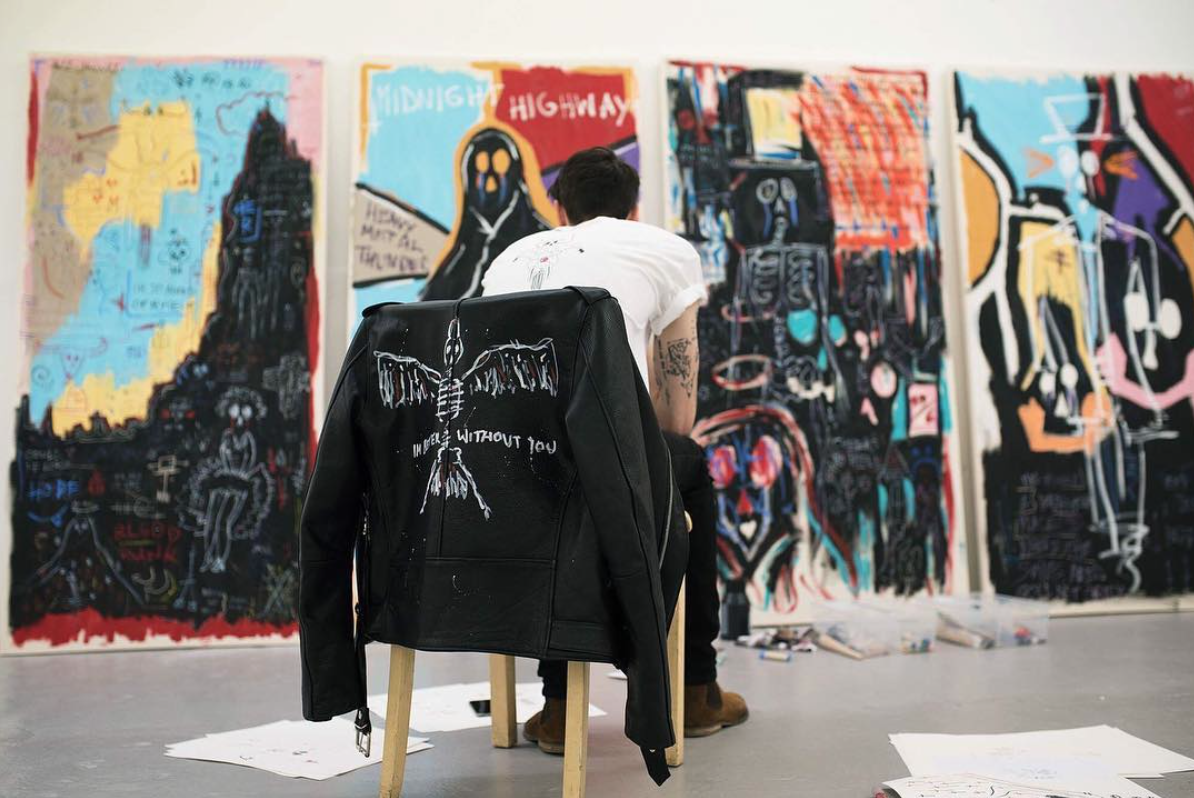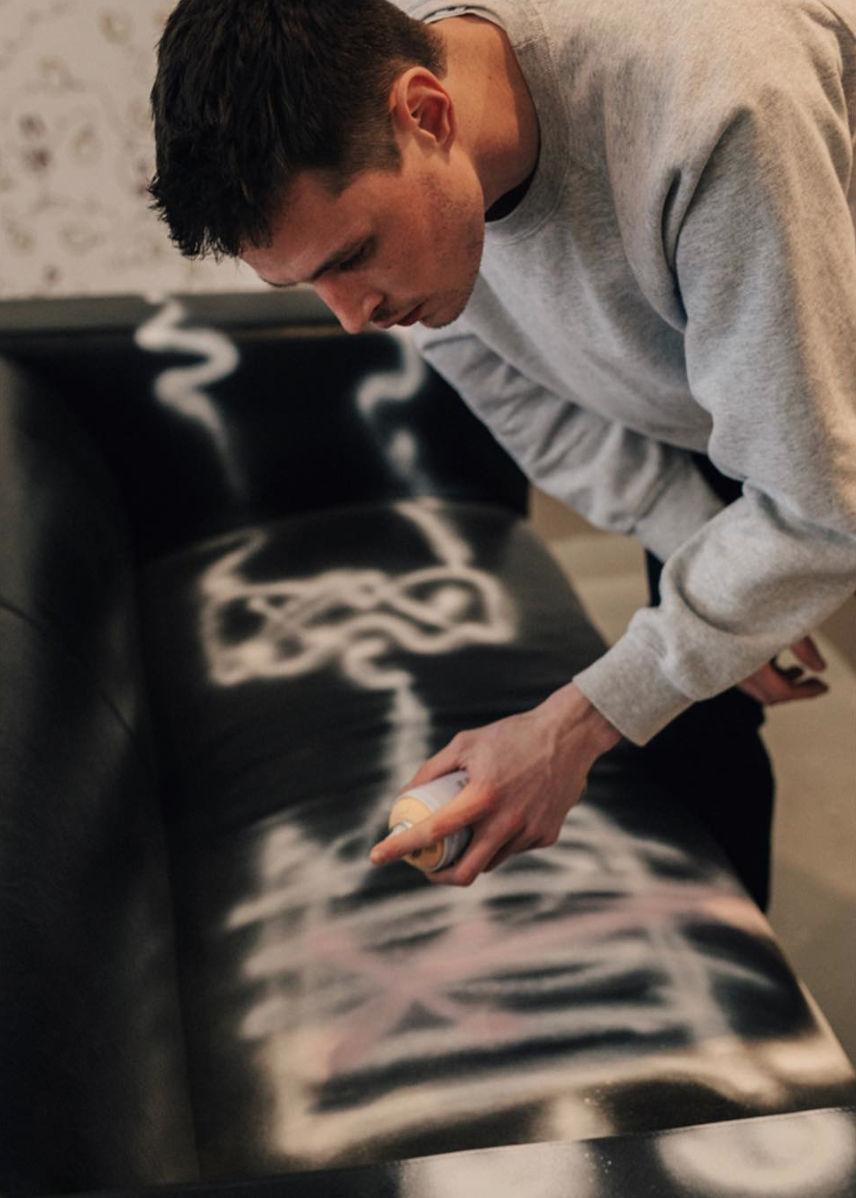How Andrew Westermann Powers Past The Bounds With His Fantastical Art
From walking major designer runways such as Louis Vuitton, Dior, and Valentino to starring in noteworthy campaigns in the likes of Raf Simons and Carven, model and artist ANDREW WESTERMANN has cemented himself as a prominent player in the fashion scene. Riveted with a clear sense of self and nonconformist sensibilities, there’s greater complexities below the surface with this creative soul.

Scouted along a shopping street in Cologne, Germany, Andrew took a chance and thereafter, grabbed the opportunity to fly out to Paris for his firsthand experience at castings after turning a legal age with a ‘why not’ attitude; the rest is history. But beneath all the wavering glitz and glamor of fashion, art strongly integrates into his life—alternating between various artistic pursuits ranging from painting, illustration, and music. “I love switching between all the things I do,” he expresses. “Each discipline pushes the other—you have to learn time management, concepts, and organization and I think that’s something really important.” Whether it’s traveling, working on art and music, and meeting people for collaborations, no day is the same and it’s that special kind of nine-to-five that lets all his creative undertakings harmonize.

From outward, he presents the image of a rockstar—statuesque, strong-faced, and riddled with interesting tattoos attached with grim and fantastical imagery. Artistically, that graphic penchant of his is distinctively infused in his illustrative creations and one can freely make the connection that the skull-ridden masterpieces before them are his—a symbol that plays a large role in his work. “The process is me using my main motif which are skulls and just seeing how far I can go with that one symbol,” he shares, often expanding his pieces by adding lyrics and poetry to equip it with a deeper sentiment—exploring themes like human mortality and self-referentiality, with the skull always being his starting point.
“I did it for me. I started at a time where I was struggling with myself and my demons and it was just a good way to get sh*t out of my head. I kept at it and learned about myself and how to express myself on a canvas.”
Andrew speaks with an adamant sense of self-awareness, both in his art and the essence of his work as a model. He travels, works with incredible people, and gains chances to broaden his endeavors from the job’s nature but ultimately acknowledges how it can be an affliction. “People give you recognition for something you haven’t worked for. I was born like this. Of course, I’ve put in a lot of work and it’s really tough but in the end, I’m getting paid for something that was given to me,” he tells, conscious of its superficial overtones and stating an utmost importance to never lose oneself in the fast-paced, entrancing culture surrounding the work and industry. From the whirlwind that comes with being a multi-hyphenate, Andrew remains steadfast in not letting the grass grow beneath his feet, delving beyond the exterior more than anyone could explore.

“You have to really reflect on what the whole job is and what it can do to you. Once you know that it’s not forever, that you should enjoy it while it lasts and don’t lose yourself along the way, it’s great.”
It’s hard to put someone like him or his art in a specific category. Everything is derived from his surroundings, personal demons, and things and experiences no one else can explain but himself. His unabashed honesty and propensity for veering away from the herd in a time of trends and repetition, especially with a role in the fashion scope, proves him to be a standout and one to keep a close eye out on in both the art and sartorial scene. Having spent ample time in the business, he sticks to an individualistic style philosophy. “I don’t know about trends but it’s more a mindset that I dress myself with. You can wear what you want and if you proudly wear your mindset or reflect it, then that’s the way to go. Rock & roll forever!”
How did you get started on your work as an artist? And pursuing a career in the art scene, what steered you towards it that shaped who you are today?
I never intended to show in galleries; that just came along naturally. I did it for me. I started at a time where I was struggling with myself and my demons and it was just a good way to get sh*t out of my head. I kept at it and learned about myself and how to express myself on a canvas. I’ve always done it for me but if people or galleries approach me, I’m always super hyped because it means I can show people how I feel on a visual scale and I get to have feedback from people.
Growing up in such an artistically inclined country like Germany, would you say the culture and elements of it contributed to your work? Maybe things you picked up from the environment when you were younger?
I moved around as a kid. I grew up in the States and was almost a teenager when I came back [to Germany]. But in both countries, I lived close to the forest and had a big back garden so the element of freedom and nature is repetitive. I think the whole cycle of life and nature’s course is what I’m stressing because ‘death is the greatest thing about life—it gives it its end and makes it valuable.’ Best quote ever. Shoutout to Steve Jobs.
You mentioned before that you never thought you’d be a model. Now that you’ve been doing it for quite some time, what would you say is your favorite thing about it? Would you say it’s a job that enriches you in a way because of all the things you get to experience?
Definitely. You travel and meet great people and I have so many amazing friendships and opportunities now because of it, but it’s a curse. It can mess with you because you think, ‘oh, this is cool’ and ‘oh, the kids that used to be mean at school want to hang out now’ so you have to really reflect on what the whole job is and what it can do to you. Once you know that it’s not forever, that you should enjoy it while it lasts and don’t lose yourself along the way, it’s great.
You have a lot of tattoos! Can you share with us some stories behind it?
I knew at a very young age I was going to have tattoos. Most of them I drew myself but I have some Wes Lang sketches on me too. My tattoos kind of make my body a scrapbook because they’re all memories, hopes, demons or anything that matter to me. My favorite is probably the 10/6 on my arm. It’s the number that’s on the card that the Mad Hatter from Alice In Wonderland wears. I’m obsessed with Lewis Carroll and how he could have the balls to write a story like that in that day and age as a grown-up.
What has been your favorite project that you’ve worked on?
Definitely all the show preparations and fittings at Louis Vuitton and Dior. It’s tough and the hours are long but the end product has so much emotion and fire that it’s worth it. I love working on shoots too. You build a real connection with the team and photographer and you see art being made in front of your eyes.
As someone who works with a lot of sartorial masterminds, what’s something you’ve picked up from working with them? Has that incorporated into your own personal fashion philosophy in any way?
When I went into the fashion industry, I knew nothing. I have had the best crash course in fashion that any fashion student could ever wish for, I guess. Aesthetic, composition, art direction, production, meaning, heritage, direction—I’ve seen and learned all of these aspects. The best philosophy is to tell a story. People are being bombed with all this information and hype that it’s sickening. I, for my side, want a good story and feel and [to] understand what the brand or designer is saying.
Which do you think is more important—your message or the audience’s perception of your work?
The name of my last show was Whatever I am To You, That’s Fine. It was my therapy in saying I do not give a sh*t because for the eight to nine years I have been modeling, I’ve been judged completely by my appearance and now that I’m doing things where I express myself and people are saying stick to modeling, it used to make me angry. Now I just don’t care. So getting my message out is more important but if it’s not for the viewer then fine, cool, whatever floats you boat but if it does touch the viewer and makes them feel something, then I can only say thank you and I love you.
Post a comment